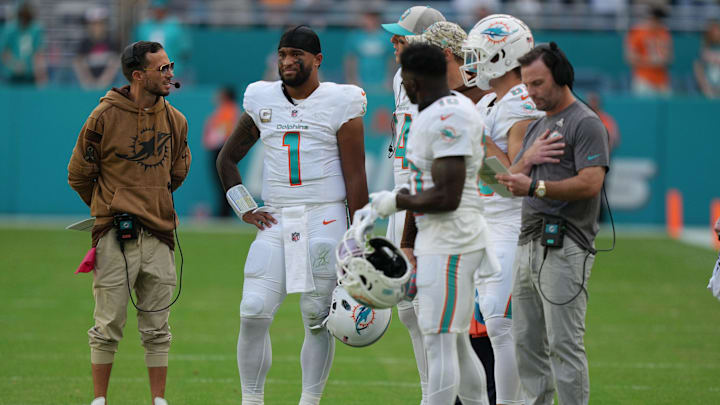Mike McDaniel showed his inexperience when he couldn't change the Miami Dolphins offense to meet those injuries.
Without Tyreek Hill, Miami did o.k., against the Jets. Against the Titans, Hill was hurt badly and couldn't get into the game enough to make a difference. McDaniel struggled with the play-calling after Hill went out. Tua struggled to find the next receiving threat when Waddle was taken out of the game plan.
Faced with a physical defense, the Dolphins couldn't run the ball effectively and Tua was grounded. Against the Cowboys, Ravens, and Bills, Mike McDaniel continued to try and pound the ball or force the plays to Tyreek Hill. He didn't change much.
When the defenses took away the receiving lanes, McDaniel called quick screens to his wideouts or he tried to muscle the ball upfield on the ground. Those better defenses were not scared of the motion or Tyreek Hill and they forced the Dolphins to beat them on the ground.
Miami's best play was the counter hand-off where Tua would turn one way and flip the ball to the RB going the other way. It worked earlier but at the end of the season, teams realized what they were doing. Still, McDaniel didn't change it up. At least not enough.
